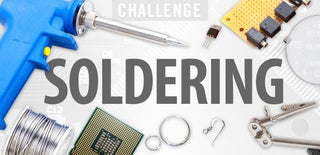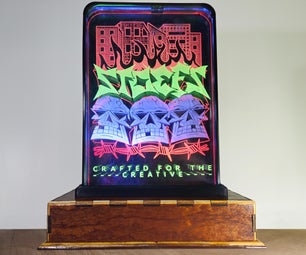Introduction: 100w LED Flashlight
It this tutorial Ill be teaching you how to build an extremely powerful flashlight!
Its very easy to make, and extremely cheap as well!
This flashlight has many uses, Pure white light means its great for filming. Or you could use it as a motion activated spotlight in your backyard! The possibilities are endless!
Step 1: Gather Supplies!
Step 2: Connect Some Wires!
Add connections to the 12v battery and wire it directly into the transformer
This is not permanent because we will be adding a switch here later
Step 3: Step Up Voltage
Using a multimeter measure the voltage of the transformer.
Use a small screwdriver to slowly turn the voltage up to about 34 volts
Step 4: Add a Switch
Now cut one of the wires going into the transformer and add in a switch
You will also need to use a dremel to cut a square into the metal tool case and feed the switch through there.
Step 5: Scratch Away Paint
Using a dremel, scratch away the paint until you have a big square that can fit your LED
This is alot harder than it looks and took about an hour.
Step 6: Final Touches
Now add some thermal paste and mount the LED directly onto the metal parts, being sure that the positive and negative tabs dont touch.
Then solder on wires from the transformers output onto the correlating LED tabs (+ and +) (- and -)
Step 7: You're Done!
You're done! You now have an extremly bright flashlight!
Thanks for reading my instructable!

Participated in the
Outside Contest

Participated in the
Soldering Challenge

Participated in the
Safety Challenge













